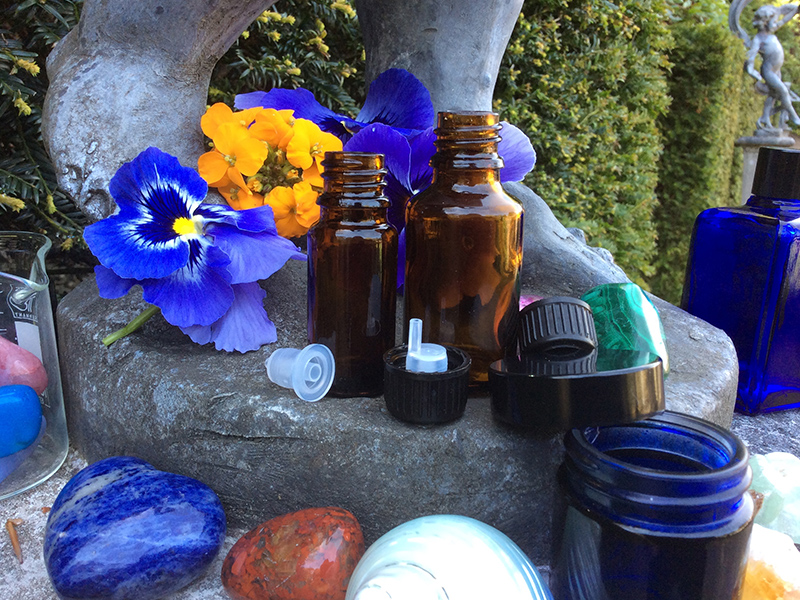Essential oils comprise of a mixture of volatile chemicals.
Because they are volatile, essential oils rapidly evaporate , or ‘vaporise’, especially when present in warm, airy, light conditions. For this reason, essential oils are stored within air-tight containers, in a cool, dark, environment such as, for example, a fridge, cold store or cupboard.
Essential oils are supplied in either brown or blue glass bottles with drop-dispensing caps and screw-top lids to prevent and slow down the rate of vaporisation and the consequential process of oxidisation (which instigates transformation of the chemical mixture comprising the essential oil). Once the required amount of essential oil has been dispensed from it’s bottle, the lid is immediately replaced. Some suppliers do provide essential oils in clear glass bottles (with dropper caps and lids) which are inserted and contained in an additional aluminium canister sleeve to protect the oil from UV light (do not purchase essential oils stored in clear glass bottles without this additional protection).
The images of essential oils featured in Essential Oils for Mindfulness and Meditation and Essential Oils for the Whole Body were, thus, deliberately photographed with their dropper caps and lids in place.
Clear glass bottles were purposely used for the photographs that appear in my books, website and facebook page to demonstrate and display the various colours, translucent tones and visual qualities of the essential oils.
However, when not being photographed or otherwise used, these essential oil bottles are re-inserted in their sleeve-like aluminium canisters to protect the oil from UV light (as above), and they are stored in a fridge to keep them cool.
Bottles of essential oils sold for retail contain small, limited, quantities (3ml, 5ml, 10ml, 20ml, for example). This means the essential oil is usually dispensed within an appropriate safe time period. Once opened, essential oils should be used within 12 months, or 6 months for citrus oils.
NB: Essential oils will break down or alter the chemical structure of certain substances they come into contact with, such as polish, varnish and certain plastics, and will corrode some metals. This is why essential oils are contained in glass or aluminium containers. Neat essential oils should not be stored in plastic bottles; essential oils degrade plastic, molecules of which permeate into the essential oil. Essential oils will spoil varnished or polished surfaces; traces or spillages must be wiped up immediately to limit any damage (it is useful to stand bottles of essential oils in a box or on a tray).
For further information, please refer to Safe Use and Application
Reference:
Heather Dawn Godfrey “Essential Oils for Mindfulness and Meditation” (2018) Inner Traditions Bear & Co. Rochester Vermont USA
To purchase this book click here


